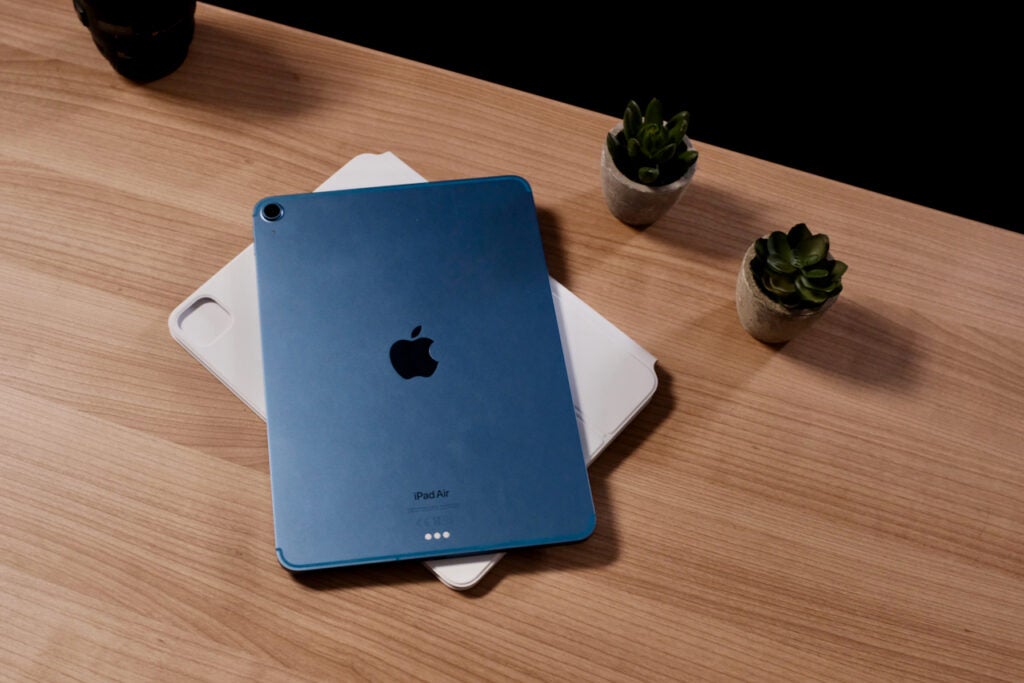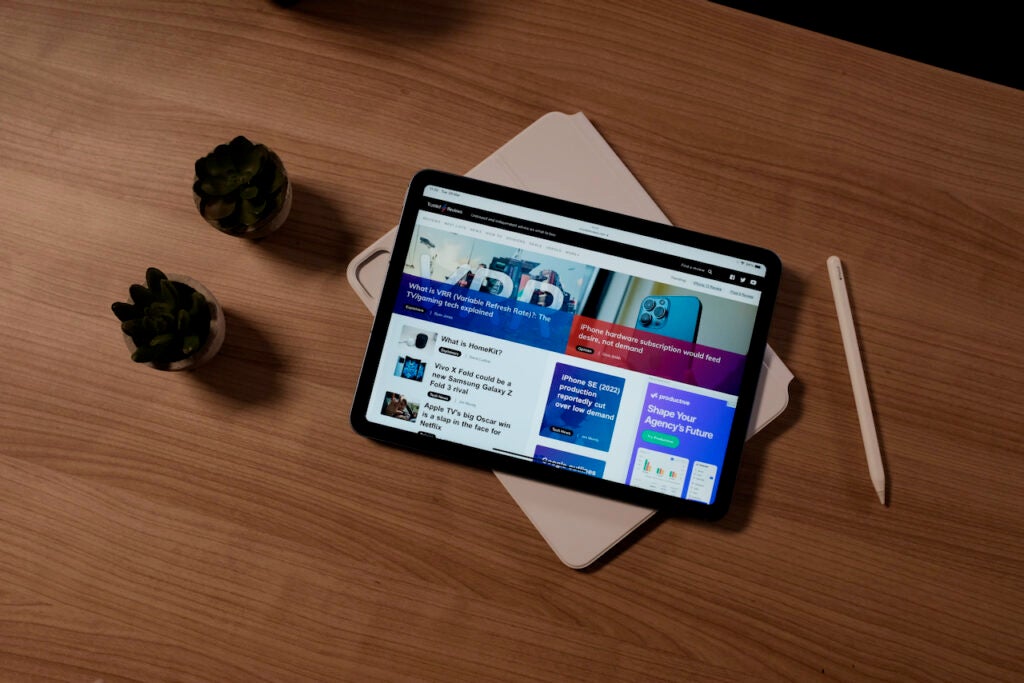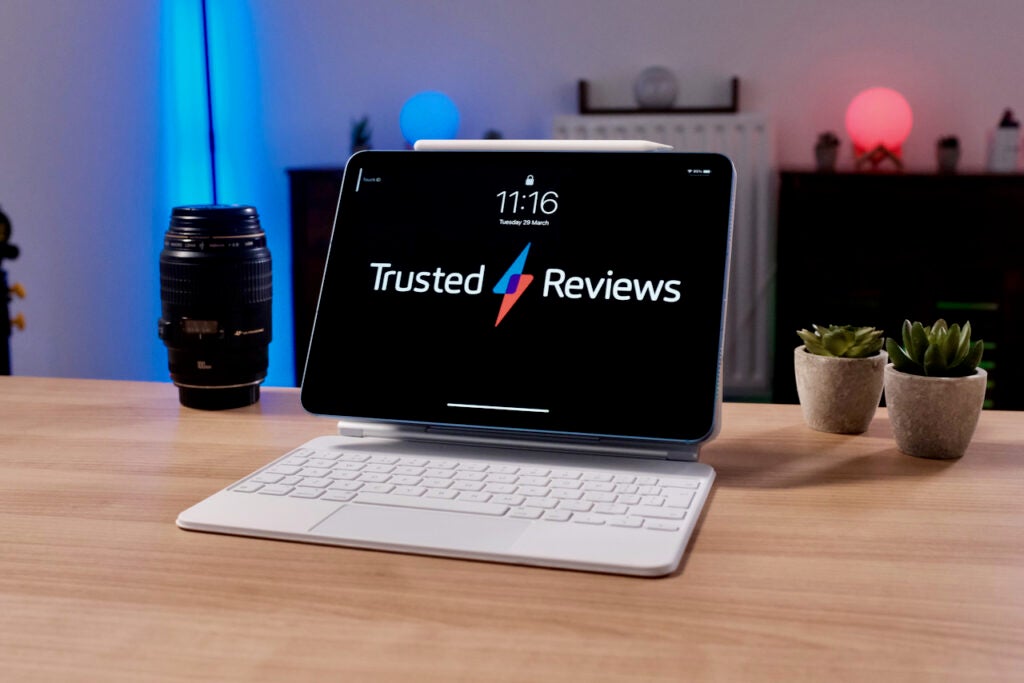Apple’s iPad and iPad Air are different collections of devices for very different people, but what are the key differences and which is best for your specific needs?
While the iPad Air might tempt you, you might be able to save yourself some money if you don’t mind the slightly older look of the entry-level iPad. Conversely, you might find that the processing power of the iPad Air makes that range all the more tempting for your needs.
We at Trusted Reviews are here to help you make the decision, but rather than focusing on just one model of iPad and iPad Air, we’re going to compare the collections as a whole to help you understand the key differences and which, broadly speaking, is better for your needs.
Price
Price is one of the biggest differences between Apple’s entry-level iPad and the mid-range iPad Air. The basic Apple iPad has acted as the go-to for those in need of a cheap iPad experience for years, while more specific variants of iPad – the mini, Air and Pro – are much higher in price. Though the price has fluctuated and grown in line with inflation, the 9th-gen iPad will generally set you back around £369/$329 in 2023.
The iPad Air, on the other hand, has always been a more premium option compared to the basic iPad – the iPad Air 2 cost £399/$499 back in 2014. However, with its 2020 redesign came a significant bump in price, positioning the iPad Air comfortably between the entry-level iPad and the iPad Pro with a £599/$599 price tag.
That further increased in the UK with the release of the £669/$599 iPad Air 5. That at least made it more distinctive in terms of pricing, setting itself far from the iPad and iPad Mini.

However, just as Apple finally began simplifying its iPad offering, the company confused things with the iPad 10. The 10th-gen iPad is anything but an entry-level model, sporting an upgraded design and plenty of new features compared to the genuinely entry-level iPad 9, and the price tag of £499/$449 matches that.
That all said, generally speaking, the iPad is seen as the entry-level iPad and the price reflects this, while the iPad Air is positioned as a more premium, powerful option that costs a little more, though not quite as much as the iPad Pro. For more, take a look at our selection of the best iPads.
Design
Design has usually been a key differentiating factor between Apple’s entry-level iPad and the iPad Air collection, though as the iPad 10 complicates things in terms of pricing, so it does in design too.
Up until the iPad 10, the design of the tablet had changed very little. Though it got a little flatter and bigger in recent years, it’s still quite reminiscent of the original iPad with thick bezels and a now-ageing Home button.
It does have a largely premium build with an aluminium rear, but its budget nature is notable in a few ways, lacking a laminated display that makes taps on the display’s tablet feel more hollow than the laminated iPad Air display. It’s also more limited in terms of accessory support, lacking the smart connectors present on most other recent models of iPad.

The iPad Air, on the other hand, looks and feels more modern and premium with an angular design reminiscent of the iPad Pro and recent models of iPhone. It ditches the Home button completely to expand screen space with much smaller bezels than the entry-level tablet, sports smart connector support for advanced accessory use and, as the name suggests, it’s pretty damn lightweight too.
But while that is indeed the case for most generations of iPad, the latest generation of iPad confuses things somewhat.
As well as an increased price that brings it much closer to the iPad Air than any other entry-level iPad, the tablet sports a complete redesign that brings it in line with the likes of the iPad Air and iPad Mini with slimmer bezels, an angular body and the introduction of Touch ID within the side-mounted power button.
That said, while the recent iPad 10 looks pretty similar to its iPad Air brethren, the majority of the entry-level iPad collection doesn’t, and that’s worth bearing in mind if the design is important to you.

Processing power
With the Apple iPad framed as the entry-level option in Apple’s tablet range, it shouldn’t come as much surprise to find out that the iPad Air is generally the more powerful of the two with the inclusion of newer chipsets – though this does depend somewhat on Apple’s fragmented tablet release schedule which sometimes sees a cheaper tablet with a faster processor than a more premium variant.
Those odd timings aside, the Apple iPad is very much the entry-level tablet in terms of processing power. Though the exact chipset depends on the generation of iPad you opt for, generally speaking, it’s usually a year or two behind what you’ll find on more premium models of iPad like the iPad Air.
Take the iPad 10 as an example; it sports the same A14 Bionic as the previous-gen iPad Air 4 and iPhone 12, both released two years before the iPad. That means that, while still powerful enough to be used on a flagship phone, it’s not the best processing power available right now.
That’s a stark difference to the iPad Air, which since its renaissance in 2020, has seen it act as a bridge between Apple’s standard and Pro tablet lines, sauntering on the line between casual and pro device.

That said, the processing power of the iPad Air is usually equal to – or greater than – what’s available on the equivalent flagship iPhone of the time. That means that the iPad Air 4 shared the same A14 Bionic chipset as the iPhone 12, both of which appeared in September 2020.
The latest iPad Air takes it even further with the inclusion of the Apple M1 chipset – the same as that on Apple’s laptop and desktop range, as well as previous iterations of Apple’s top-end iPad Pro.
So, generally speaking, the iPad Air range is more capable than the entry-level iPad range, though if you’re opting for a fairly recent iPad, you’re unlikely to notice much of a difference in day-to-day tasks. Where the iPad Air will shine, however, is with more processor-hungry apps like LumaFusion Pro and Procreate.
Accessory support
As with processing power, the iPad Air has been seen as a bridge between the regular iPads and the iPad Pro, and accessory support reflects this.
Rather than supporting the older first-gen Apple Pencil and basic folio keyboard, recent models of iPad Air boast support for the same pro-level second-gen Apple Pencil and premium Magic Keyboard, making them a tempting option for those that want a tablet for both work and play without forking out for an iPad Pro.

The entry-level iPad, on the other hand, has traditionally been more limited in terms of accessory support. This means only being able to use the first-gen Apple Pencil with its clunky Lightning charging issues and more basic Bluetooth keyboard folios. They’d still get the job done on a budget, but it wasn’t the ideal experience.
However, the reveal of the iPad 10 confuses this somewhat, with the latest iPad offering support for the second-gen Apple Pencil and even getting its own dedicated Magic Keyboard, making the differences in accessory support non-existent. But, as mentioned, that comes at a price hike that brings the iPad very close to the iPad Air.
That said, if you’re opting for one of the truly budget models of iPad, it’s safe to say that the iPad Air has better accessory support.











